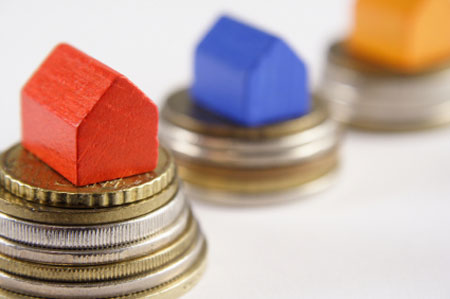Buy To Let
Have you overpaid stamp duty? How you can reclaim the tax

Guest Author:
Paloma KubiakMillions of pounds in overpaid stamp duty has been refunded to thousands of homeowners. Given all the changes to the property tax, there’s a chance you may be owed money. Here’s how to check and get the tax back.
Stamp Duty Land Tax (SDLT) is a fixed tax paid by property buyers in England, Wales and Northern Ireland. Most people use a solicitor or legal conveyancer to act for them, but it’s the buyer’s responsibility to pay any SDLT. In Scotland, it’s called the Land and Buildings Transaction Tax (LBTT).
The stamp duty rates are currently set at the following thresholds: no tax on house purchases up to the value of £125,000, 2% tax for purchases between £125,001 and £250,000, 5% between £250,001 and £925,000, 10% between that and £1.5m, and 12% for everything above.
That seems straightforward but stamp duty has undergone a number of changes since it was first introduced in 2003. SDLT experts, Cornerstone Tax, says stamp duty has been subject to more alterations than any other comparable tax.
The most recent took effect in April 2016 where a 3% surcharge was applied to the purchase of second homes, and in December 2014, the government announced the rates would be reformed from a slab system to an incremental system.
Given all the changes, Cornerstone says the legislation governing it is full of exceptions, exemptions and reliefs covering the vast variety of property types and property buyers.

Wellness and wellbeing holidays: Travel insurance is essential for your peace of mind
Out of the pandemic lockdowns, there’s a greater emphasis on wellbeing and wellness, with
Sponsored by Post Office
As such, it is perhaps no surprise to note that HM Revenue & Customs (HMRC) has refunded £127m of stamp duty to second-homeowners since the surcharge was introduced: 6,800 additional property refunds totalling £80m were paid in 2016/17 with a further £47m repaid in Q2 2017. In total, HMRC had to give refunds on 10,700 transactions at an average cost of £11,869 each.
Under the replacement main residence rule, people who buy a second property without selling the first must pay higher stamp duty upfront. If they sell the former home within three years, they are eligible for a refund.
Cornerstone predicts more than £3bn has been overpaid in stamp duty in 2015/16. David Hannah, principle consultant and founder of Cornerstone, explains: “The law around SDLT is incredibly complex and many advisors who help consumers evaluate how much they should pay are trained only to differentiate between residential and commercial property.
“They simply aren’t familiar with the intricacies of the law’s evaluation criteria, which has led to many consumers being mis-advised unintentionally. There are a number of other reasons why people have overpaid; it’s not always a misinterpretation of the 3% surcharge.”
In one case handled by Cornerstone, a sole flat buyer named his girlfriend as a guarantor and borrower on the mortgage. He was incorrectly told that as his girlfriend already owned a separate property, he was liable for the 3% surcharge. This meant he was billed £14,000 for stamp duty. The correct bill was £5,000, a £9,000 difference.
Hannah says: “It’s a common misconception that being on the joint title or mortgage of a property means you have an ‘interest’ in it but this isn’t the case. This is also a good example of how confusion on SDLT hinders parents trying to help children onto the property ladder, a common route to market among first-time buyers. The difference between paying £14,000 or £5,000 in SDLT could well be the deciding factor on whether someone was able to go ahead with the up-front costs of a property purchase or not.”
How to check and reclaim overpaid stamp duty
HMRC states buyers have 12 months from the filing date to amend any returns, including if a change means you’ve paid too much tax.
After 12 months, mistakes can’t usually be corrected but the deadline for claiming back overpaid tax is four years from the effective date of the transaction. This means it’s possible to claim back overpaid SDLT from as far back as August 2013, according to Cornerstone.
The first thing to do is to find out how much SDLT you paid – you can contact your solicitor to find out the amount if you don’t know it already. You need to claim the refund by writing to the Stamp Duty Land Tax Office, quoting the UTRN. You’ll need to include a copy of the original SDLT return with your claim along with the following:
- An explanation of why you think you overpaid
- State which parts of the SDLT are wrong
- Give revised figures and confirm the amount of refund due
- Confirm who should be repaid (you’ll need to give permission for the money to be paid to someone else).
Cornerstone provides a SDLT refund service, giving customers free advice. However, it works on a no-win, no-fee basis, charging a fee of 25% of the sum refunded so if you’ve the time, inclination and patience, it could prove more financially rewarding to handle the process via HMRC yourself.